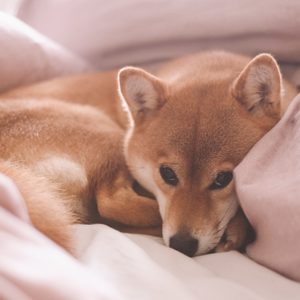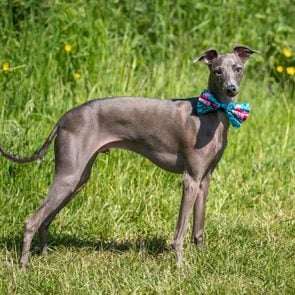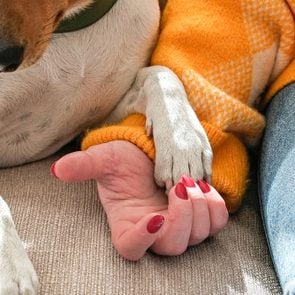12 Dogs with Floppy Ears That Are Irresistibly Cute
Updated: Apr. 14, 2024
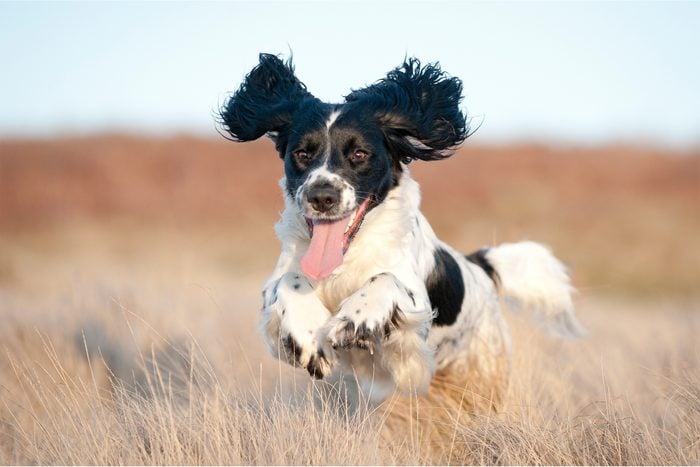
Basset hounds and beagles are only just the beginning when it comes to lovable dogs with floppy ears
Do your ears hang low? That’s probably not an issue for you, but it’s certainly the case for these dogs with floppy ears. And yes, they even wobble to and fro!
Why do some dog breeds have floppy ears?
Besides being an endearing characteristic that makes your pup more adorable (if that’s even possible), floppy ears serve a distinct purpose for some breeds. “For scenthounds, it’s thought that the drooping ears help them pick up scent,” says Elaine Ostrander, PhD, founder of the Dog Genome Project, “that when their nose is to the ground, the ears form a little cone around it that funnels the scent. We can’t prove it, but that’s the speculation.”
Other breeds might have developed floppy ears because they worked on boats, pulling nets and the occasional sailor out of the water. “Dogs like Newfoundlands, whose job it was to jump in the water and save people, needed floppy ears for a good reason,” says veteran dog breeder and dog show judge Patricia Craige Trotter. “It helped keep the water out.” And with some of the non-working breeds, floppy ears might just be what breeders thought was cute. As Ostrander notes, not every canine characteristic is functional—some of it is about looks.
Dog breeds with floppy ears
We talked to a panel of dog experts about some of the most popular dog breeds with floppy ears. Ahead, learn which dogs have the floppiest ears—and how they got those adorable appendages.
Get Reader’s Digest’s Read Up newsletter for more pets, humor, travel, tech and fun facts all week long.
About the experts
Reviewed for accuracy by: Caroline Coile, PhD, an award-winning journalist specializing in canine breeds, health and science. She’s the author of 34 books, including Barron’s Encyclopedia of Dog Breeds. |
1. Basset hound
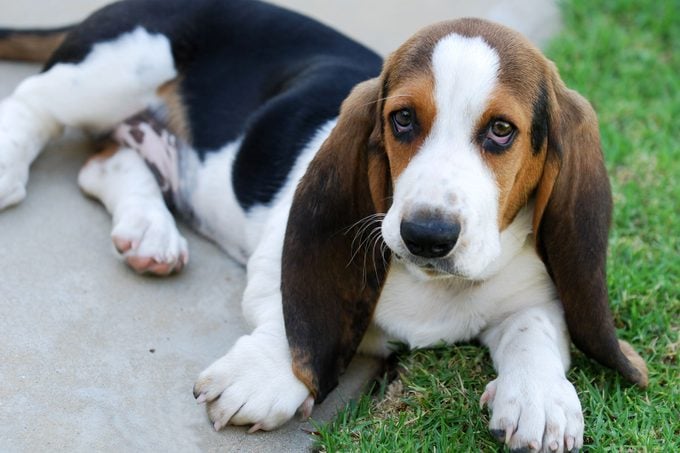
You probably immediately thought of basset hounds when you heard “floppy ears.” Theirs look even lengthier because of their long faces and short, muscular legs. Basset hounds are stellar scent trackers—a talent that many attribute to those magnificent ears. “It’s believed that that ears drag the ground and ‘beat up’ or activate the smell that they’re trailing,” says Trotter. While bassets can be pretty stubborn when they want to be, they’re also known for being laid-back and loyal, making them a popular family dog.
2. Beagle
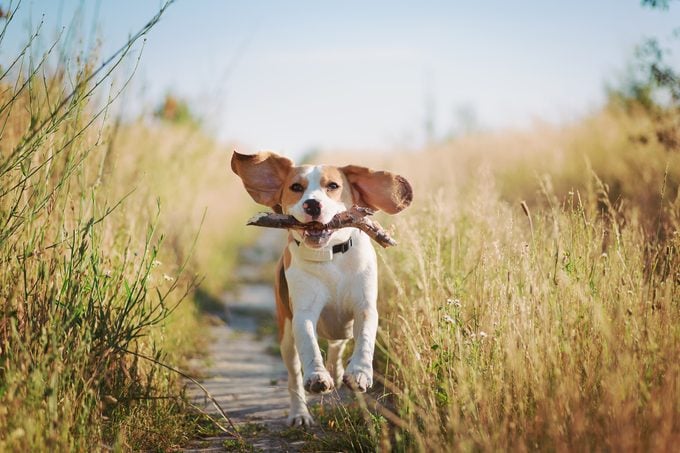
Beagles are also scent dogs, and they were bred to hunt, so those ears may come in handy when they’re tracking. But it’s also possible that beagles developed floppy years because breeders just liked the way they looked with them. “A lot of the breed standards for dogs with floppy ears often also call for the dog to have what’s called a pleading expression,” says Trotter. “And beagles definitely have that look.” They also have tons of energy and require lots of attention, affection and playtime.
3. Dachshund
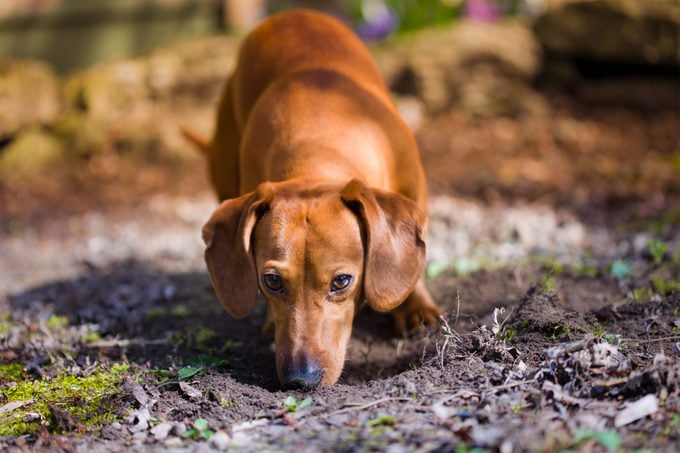
These little hot dogs are surprisingly tough. Dachshunds are part scent hound, so they have a strong nose to go with their adorably floppy ears. With bold personalities that exceed their size—they’ve got that big-dog bark down pat—these smart, vigilant pups make great guard dogs. While they aren’t built for long-distance running or jumping, dachshunds have a ton of energy and will be up for any games, especially ones that offer a good challenge.
4. Bloodhound
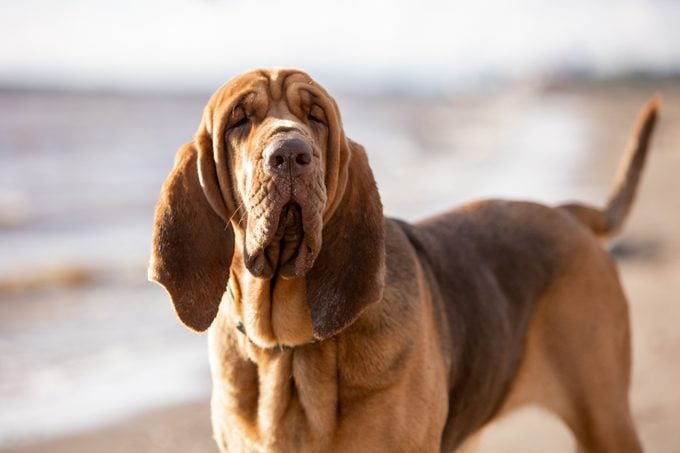
Also known as a sleuthhound, the bloodhound is the best dog for sniffing out a missing person. Just how powerful is its nose? Under certain conditions, bloodhound-trailing evidence is admissible in U.S. courts. But before you bring one home, be forewarned: Those strong noses can also make a walk around the block take an hour, as bloodhounds are prone to sniffing everything.
5. Cocker spaniel
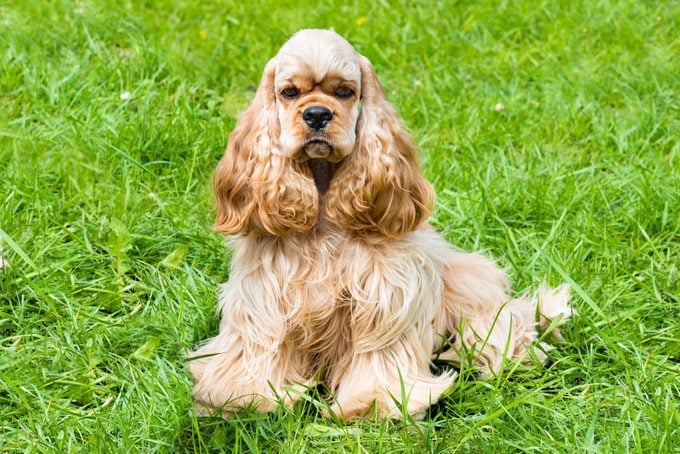
Cocker spaniels have big ears, big hearts and big brains. They were originally developed as sporting dogs, but today’s cocker spaniels are better known for their silky coats and cuddly personalities than their skill at flushing out game. Which means those gorgeous ears are mostly just for aesthetics. “They’re not as long as they look,” says Trotter. “They have a lot of that silky hair on them that makes them look bigger than they are.” Cocker spaniels do require some extra grooming time, but it’s a small price to pay for being the most beautiful creature in the room.
6. Cavalier King Charles spaniel
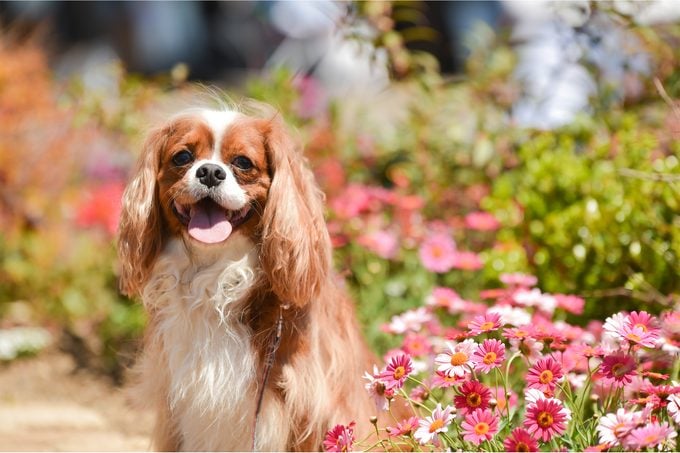
These little cuties have become a popular choice for dog owners, and rightfully so. Aside from just being adorable with their floppy ears and fluffy fur, they are extremely affectionate and loving. You’ll get the best of both worlds with the Cavalier: the gentle and fun-loving qualities of a toy breed and the athleticism of a spaniel. The highly adaptable breed does just as well with active families as stay-at-home types.
7. Weimaraner
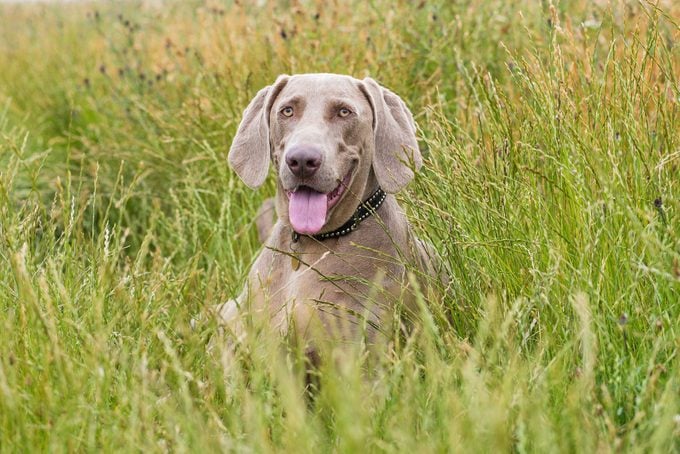
These elegant pups are always ready for adventure and enjoy lots of exercise. Those oversized ears give them solid scenting skills, but they’re just as happy running and playing with their humans. Thinking of adding a Weimaraner to your human pack? Good news: They want to be part of the family and are great with children.
8. Afghan hound
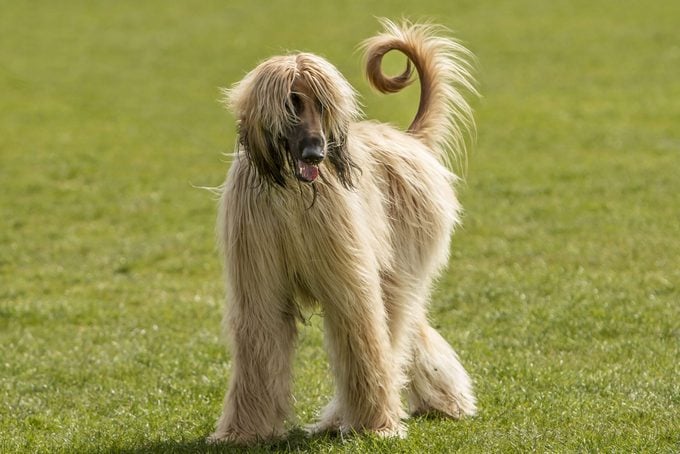
How stunning is this floppy-eared dog? If we’re being frank, the breed has nicer hair than most humans we know. The Afghan hound is a unique breed with a long, extravagant coat that embellishes its ears to make them look even longer than they are. But all that beauty served a purpose in the past: The flowing coat was protective in the harsh mountainous regions where they were first used. These pups tend to be pretty sensitive emotionally and are extremely loyal to the humans with whom they have a bond.
9. Saluki
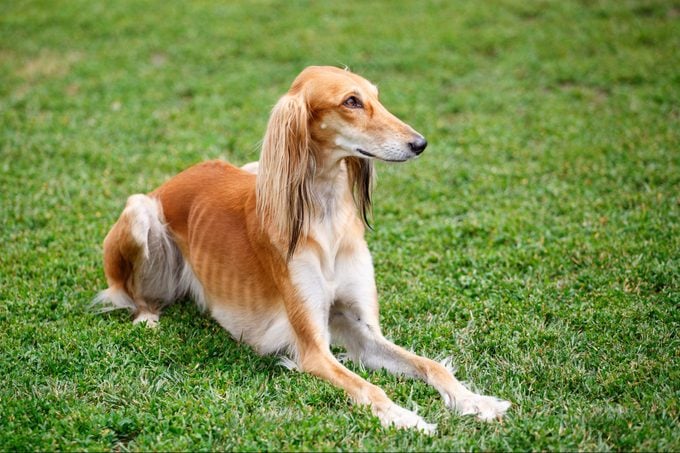
The slender Saluki have such long, silky ears that it almost looks as if they’re wearing ponytails. (In fact, many owners of the breed use an ear wrap to keep their dog’s ears out of the food bowl during chow time.) One of the oldest-known breeds of domestic dog, they are believed to have once been the royal dog of ancient Egypt. They also ran down dinner for the Bedouin in the Middle Eastern deserts. Slim yet strong, Salukis are nimble endurance sprinters that love a good run. “And they are fast!” says Ostrander. Yet despite their athletic demeanor, these pups are known for being quite gentle and loyal.
10. Golden retriever
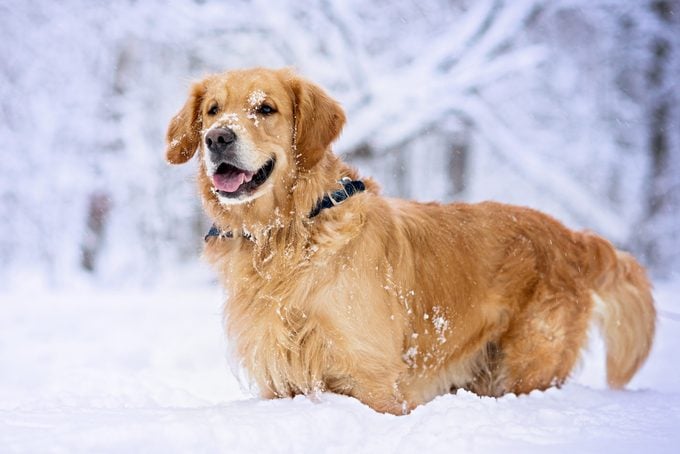
The golden retriever is one of the most popular dog breeds in the United States, and for good reason. Goldens are dogs of inordinate beauty with personalities to match. Outgoing and eager to please, these are the ideal family dogs. And while breed standards have changed over the years—”goldens now come in a whole array of colors, from a pale cream to a dark gold,” says Ostrander—the dogs remain eminently loyal, playful and super easy to train.
11. Havanese
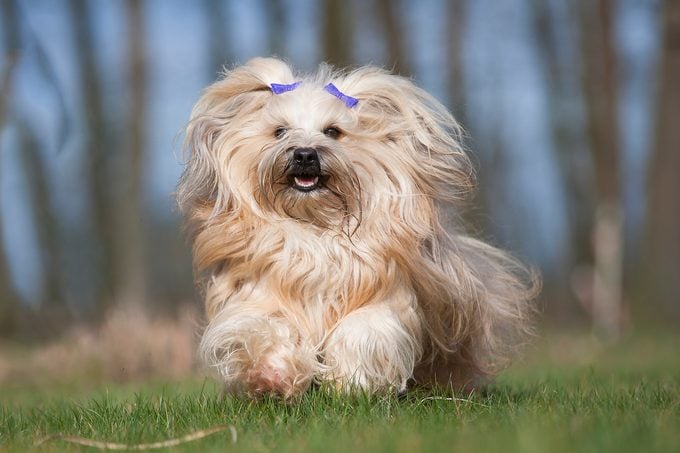
These cheerful little fluffballs are full of joy and life. “The Havanese are one of several breeds that trace back to what’s generally called ‘the dog from Malta,'” says Dayna Dreger, PhD, a senior staff scientist with the Dog Genome Project. “Apparently, these little white, fluffy, poodle-y dogs were quite common as wares on merchant ships and were dropped off in all these different locations. When it was dropped off in France, it became the bichon. In Havana, it became the Havanese. And in Madagascar, it became the coton de Tulear. They’re all traced back to the same line.” In addition to their floppy ears, Havanese have a lavish silky coat (you’ll need a standing appointment with the groomer) and a sweet but funny personality.
12. Setters
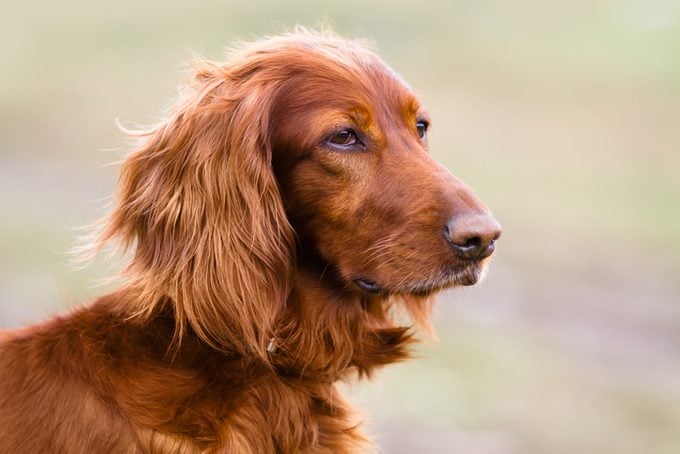
There are a few different types of setter breeds out there, including the Irish setter, Gordon setter and English setter—and all of these dogs have floppy ears. Setters are hunting dogs that are native to the United Kingdom and Ireland, but it’s unclear if their ears gave them any extra scenting abilities. Still, they’re playful pups perfect for active families.
FAQs
Why do some dogs have floppy ears?
Because humans bred them that way! “Humans said, ‘Hey, I need a dog that’s a good hunter or a good herder,’ so we bred them to have certain attributes,” says Ostrander. “Different ear shapes or sizes are believed to help dogs with specific occupations.”
Scent hounds, like the bloodhound or basset hound, were bred to have long, floppy ears because experts believed that those ears help stir up scents and funnel them into the dogs’ noses, allowing them to track better. Dogs who worked on boats were bred with floppy ears to help protect them in the water. And some companion dogs were bred to have floppy years because owners just liked the look of it.
“Dogs were domesticated very recently, only about 23,000 years ago, which evolutionarily is a tiny drop in the bucket,” says Ostrander. “And it’s really just since Victorian times that most dog breeds were developed. It’s all as a result of someone saying, ‘I want a dog like this but smaller or with floppy ears.'”
Can dogs with floppy ears hear as well?
Yes, dogs with floppy ears hear just as well as dogs with pointy ears. In fact, some of the breeds that demonstrate exceptional hearing, like the Great Pyrenees, have fold-over ears. “Guardian breeds like the Anatolian shepherd or the Great Pyrenees can hear the rustle of grass hundreds of yards away,” says Ostrander. “Of course, it’s more the dogs’ attitude than the mechanics of hearing. They may have great big ears, but it doesn’t mean they’re listening to you!”
Are dogs with floppy ears more friendly?
Not necessarily. “Many floppy-eared dogs are members of breeds that can have more docile temperaments, but that’s not a hard and fast rule,” says Jerry Klein, DVM, the American Kennel Club’s chief veterinarian. “Each dog is an individual, and its temperament is a combination of their genetics and their socialization.”
Are dogs with floppy ears prone to ear infections?
All dog owners should monitor their dog’s ears for wax buildup and signs of infection, but dogs with floppy ears do require some extra maintenance. “Floppy-eared dogs are more prone to get ear infections,” says Trotter, “because the air doesn’t circulate quite as much into a floppy ear.” To avoid trouble, talk to your vet about how to clean your dog’s ears at home.
Why trust us
At Reader’s Digest, we’re committed to producing high-quality content by writers with expertise and experience in their field in consultation with relevant, qualified experts. For this piece, we relied on reputable primary sources, including veterinarians and canine geneticists, plus government and professional organizations and academic institutions. All of it was rigorously reviewed by Caroline Coile, PhD, an award-winning journalist specializing in canine breeds, health and science, to ensure that all information is accurate and offers the best possible advice to readers. We verify all facts and data, back them with credible sourcing and revisit them over time to ensure they remain accurate and up to date. Read more about our team, our contributors and our editorial policies.
Sources:
- Elaine A. Ostrander, PhD, founder of the Dog Genome Project, a study of canine genetics and genomics at the National Human Genome Research Institute, a division of the National Institutes of Health; phone interview, Jan. 29, 2024
- Dayna L. Dreger, PhD, senior staff scientist in the Cancer Genetics and Comparative Genomics Branch of the National Institutes of Health’s National Human Genome Research Institute and a researcher on the Dog Genome Project; phone interview, Jan. 29, 2024
- Jerry Klein, DVM, emergency veterinarian with over 35 years of experience, chief veterinary officer of the American Kennel Club and emergency department head emeritus of Med Vet Chicago; email interview, Jan. 31, 2024
- Brandi Munden, vice president of communications for the American Kennel Club; email interview, Jan. 31, 2024
- American Kennel Club: “Dog Breeds”
- Department of Justice: “Bloodhound Trailing Evidence, Is It Admissible?”

